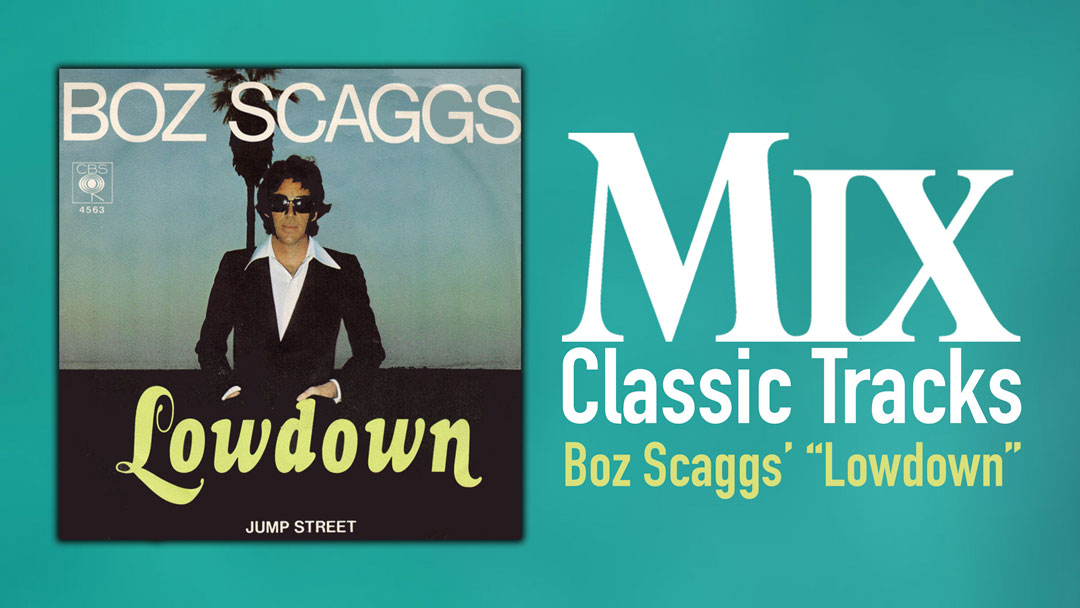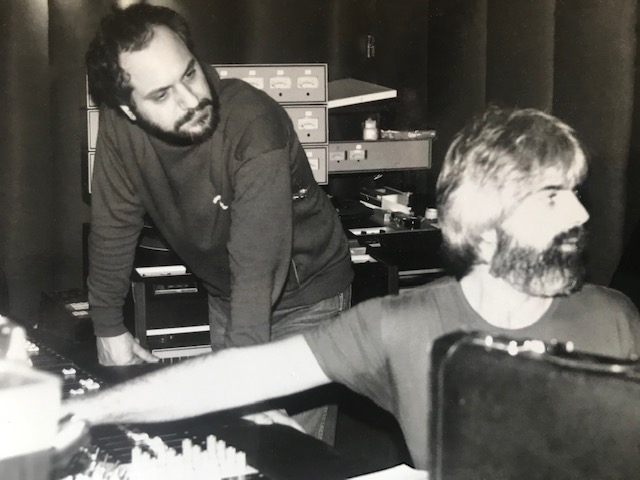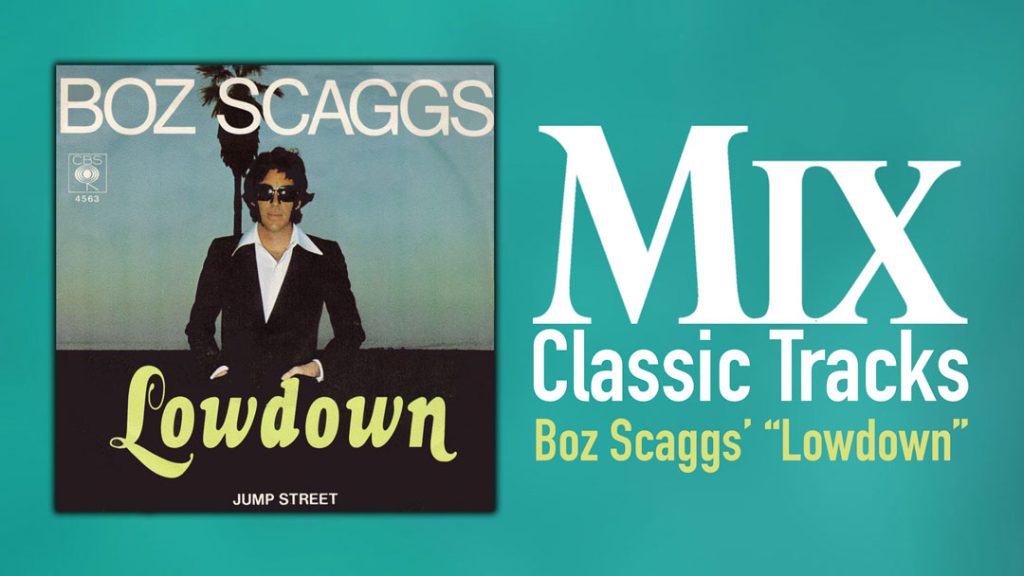
Engineer Tom Perry says that over his career, it’s been rare that all the stars aligned on a project—where the perfect artist, musicians, songs, vibe and everything else came together smoothly—but he remembers that happened on Boz Scaggs’ 1976 breakout album, Silk Degrees. “Every day was a blast; I mean, I really couldn’t wait to get back into the studio,” Perry recalls. “Sometimes you have that bond and that feeling, but it’s not a successful album. And I remember thinking as I would drive home after a session, ‘Man, if this just gets out there, this is going to blow people’s minds.’”
“Lowdown” definitely got out there, thanks in part to a Cleveland DJ who just started playing it one day straight off the album; word got back to the record company, it climbed to Number 3 on the Billboard charts and went on to win Best R&B Song at the Grammy Awards. Silk Degrees, Scaggs’ seventh studio album, put him on map— and it put Perry on the map, too, just on the other side of the glass.
DAVLEN SOUND STUDIOS
The album recording began in the Fall of 1975 at North Hollywood’s Davlen Sound Studios with Joe Wissert as producer and the nucleus of what would become Toto—Jeff Porcaro (drums), David Paich (keyboards) and David Hungate (bass)— along with Louie Shelton and Fred Tackett on guitars on the track “Lowdown.”
The song’s recognizable drum lick (and hi-hat overdub) opened what became one of the most lauded drum tracks from legend Jeff Porcaro’s immense catalog, followed, of course, by Hungate’s mind-blowing bass line.
“The drums speak throughout the tune, and they’re up there pretty hot,” Perry asserts, explaining that was his style. “Around that time, and a little before, things were evolving to where we were getting better and better drum sounds and clarity on the kick drum so that you could bring that a little more upfront without it blurring the overall ensemble. In other words, we were able to isolate a kick drum and not have a lot of leakage, and also tone down the ring and overtones so that you could bring it more to the forefront in the mix without it obliterating other things in that frequency.”
Much of that had to do with a change in miking technique, like putting the mic inside the bass drum through a hole in the head, if there was one, or inside the drum if there wasn’t a head as opposed to outside the kick drum head, which exposed it more to the room.
“When we started putting it inside the drum, we put heavy packing blankets over the kick drums so you could really keep everything out of there,” Perry explains. “And of course, even though we only had 24 tracks with Silk Degrees, you could have a dedicated track just for the kick. Back when you had limited tracks, often you’d have the whole drumset on one track, so the relationships were locked in. You couldn’t bring the kick drum or the snare drum up.”
To the best of his memory, Perry used an Electro-Voice RE20 inside the kick drum, although he notes that sometimes he would use a Sennheiser 421. He probably used a Neumann U87 on Porcaro’s snare and AKG 414s on the toms. The cymbal overhead mics were U87s and 414s were the likely room mics. On the hi-hat, he says, the mic could have been a Shure SM57 or 546.
Classic Tracks: Christopher Cross’s “Ride Like the Wind”
“They’re pretty good directional mics,” he notes. “When you’re miking a hi-hat, there’s no way to really isolate that. It’s just out there in the room, so you tend to use directional mics to keep everything out of there, although you do get snare in there.
“Davlen was a huge studio, and we had a relatively small tracking date,” Perry continues. “I was able to isolate the bass, guitar and keyboards, and I used the room a lot for the drums. Aside from the cymbal overhead mics, I had two ambient mics on stands as high up as I could get, at least 12, 15 feet up in the air and about 10 feet back from the drums, facing them.”
When they began cutting basics live (including Louie Shelton’s guitar solos, which were live), there were very primitive scratch vocals on the chorus and in other spots, as the lyrics were not yet finished. Paich and Scaggs had gone off together to write the album prior to the recording, but after the basic tracks were cut on “Lowdown,” Scaggs had to take a short leave to finish the song, according to Paich. Even without the words, Paich says, the basic track to “Lowdown” was a first take: “Jeff’s fiery intro laid down the hypnotic groove that made it easy. It was a piece of cake. The whole record was like butter!”
For this one song alone, Paich played a Moog synthesizer, ARP synthesizer, Hammond organ, Minimoog and Fender Rhodes, the latter on basics and the rest on overdubs.
One last note on cutting basics: Perry recalls that Davlen’s Trident console drove him crazy. It was an English desk, and as he explains it, everything was backward. Eventually, he asked his assistant to crosspatch the faders.
“I said, ‘I want you to crosspatch starting from 24 on the left. Make that number one, and crosspatch them all the way down,’” he explains. “And he said, ‘Are you kidding me?’ I said, ‘No, I’m not kidding. One through 32, I want you to reverse them. You’ll only have to do this once. Just do it. Retape the board, put the numbers on, and it will be done.’ I had more important things to concentrate on than remembering that the left side of the guitar was the right fader. The level meters were backward, as well.”
HOLLYWOOD SOUND, STUDIO B
From Davlen, the team went to Hollywood Sound Studios, Studio B, which featured a custom board that Perry says was primarily an API. “I believe it had Deane Jensen faders and preamps,” he says. There, they did overdubs, including Scaggs’ vocals and the backgrounds, as well as the final mix (The single was edited considerably for radio).
As for vocals, Perry is not quite sure what mic he put up for lead vocals, though for “Lowdown,” he says, it was likely a Neumann U67 or 47. “With every artist, I would hang three or four vocal mics side-by-side before each cut we did,” he explains. “Then I would be listening inside [the control room] to them sing a couple lines of the song, then move over to the next mic, and the next, and the next, so we could hear which mic was best tuned to their voice for that song.”

There were four background singers, and Perry says that they likely doubled parts. He also liked putting multiple singers on a single mic. “I am a firm believer to this day,” he says, “that three voices on one microphone, if you can get the balance, is more pleasurable to the ear than three singers on three separate microphones.”
They used very little outboard gear: “There were the general things like 1176 compressors. There weren’t any parametric EQs back then, so there weren’t a lot of outboard choices. Mostly, you got things right on the day. You tried to get your separation so you could have control later on and be able to bring an instrument up, like a snare, without bringing up the rest of the band; that’s what you worked hard on. I don’t remember using anything other than a compressor, limiter or filter.
“One of the reasons we went to Hollywood Sound is they had a gorgeous live chamber,” he adds. “What you hear on ‘Lowdown’ and the album is a live recording chamber. We didn’t use any electronic echo. We did do a little tape delay slapback here and there, but we did not use any artificial echo chambers. It was all live.”
Discover more great stories—get a free Mix SmartBrief subscription!
To this day, Perry says “Lowdown” is one of only two tracks of the 30 platinum songs he engineered that, given the chance, he would not go back and alter one bit. The other is also on Silk Degrees—the ballad “We’re All Alone.”
The music was extraordinary, as was the production and the playing—heck, it launched Toto—and to Perry, it was simply magical.
“Lifelong friendships came out of that project,” the engineer concludes. “Of all my years in the business, there are only a handful of artists that I thought worthy enough of being friends. It’s not a business full of really nice people. [laughs] We just hit it off. Boz and I were honestly friends. And aside from loving all the guys on the album—Jeff Porcaro was not only one of the greatest drummers I’ve ever worked with, but also a great human being—there was a special camaraderie. The whole project was just very special.”

